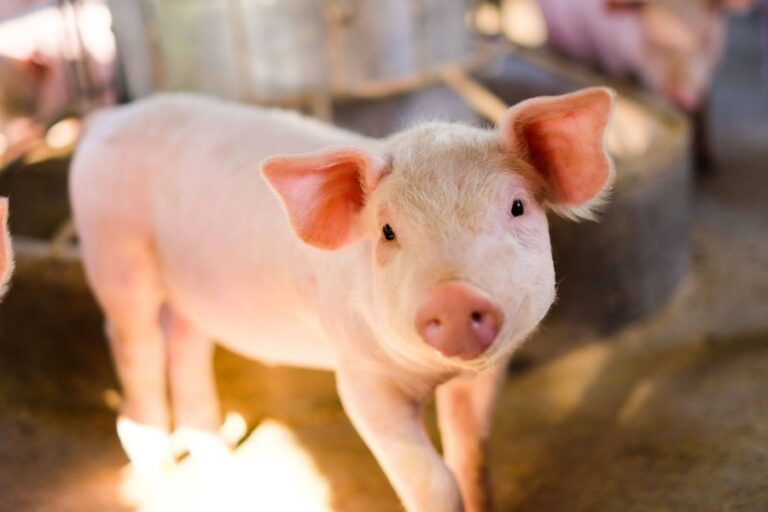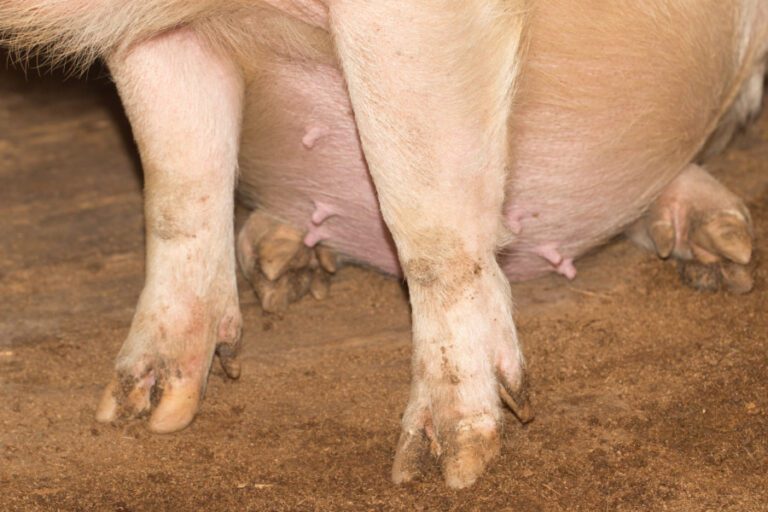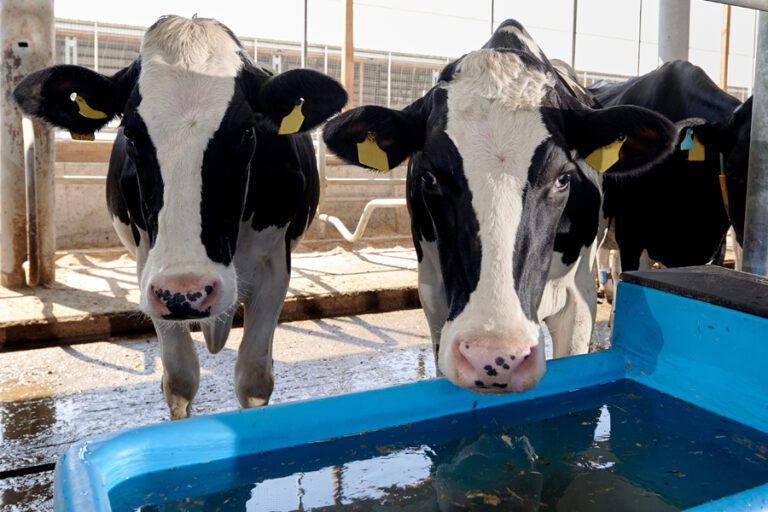Is Water Intake Holding Back Your Milk Production?
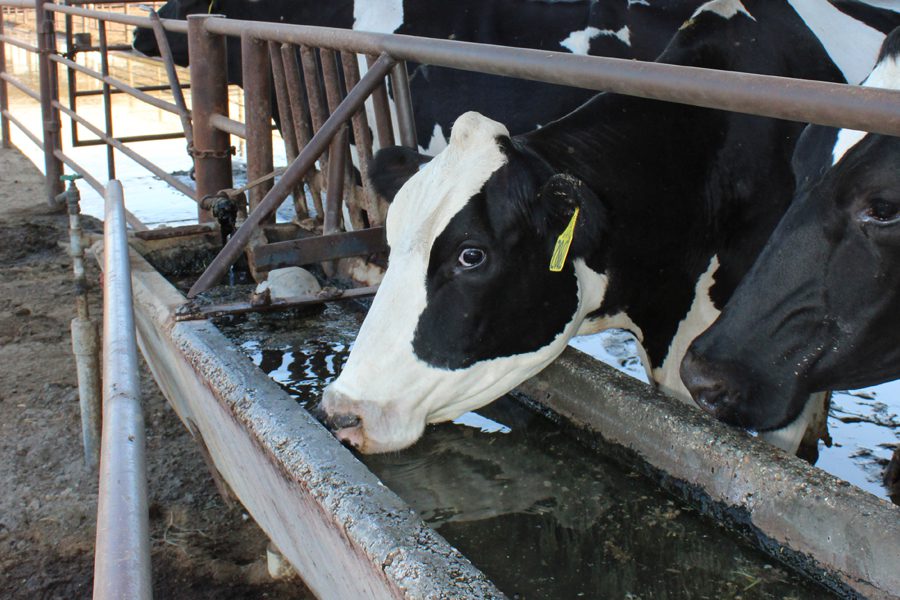
Dairy farmers are always looking for ways to maximize their return on investment. Bottlenecks around water intake are commonly overlooked on dairies which could be preventing more efficient milk production.
Why Boost Water Intake?
Water is the most essential nutrient dairy cows consume, impacting dairy cattle nutrition, physiology, and health. Yet, it is often taken for granted.
- Out of 100 pounds (45 kg) of milk, 87.5 pounds (40 kg) directly depends on the efficient production of milkfat, protein, and other solids.
- On average, a 1,500-pound (680 kg) cow’s body contains about 1,000 pounds (454 kg) or 120 gallons (454 liters) of water.
- The average dairy cow drinks 35 gallons (132 liters) of water per day, replacing the water in the body every four days.
- Each additional inch of water space is associated with 2 pounds (0.9 kg) of milk.
- Water output comes from four main sources: milk (33%), manure (33%), urine (20%), and perspiration/expiration from the lungs through panting (15%).
- Three pounds of water are needed to produce one pound of milk.
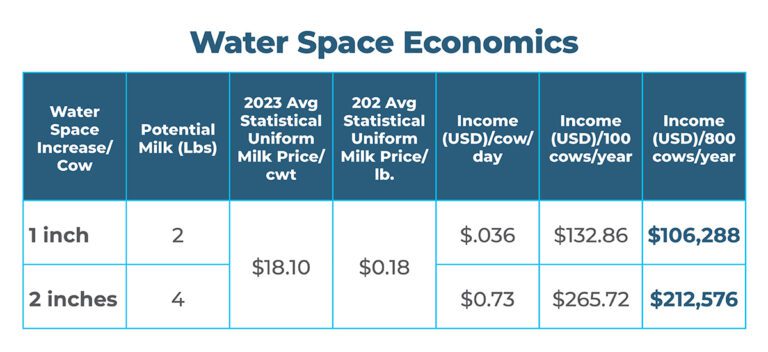
A dairy cow uses water for the critical biological processes of digestion, metabolism, milk synthesis, and regulating body temperature and electrolyte balance. Cows drink most of their water during daylight hours, mostly 30-90 minutes after milking (Burkhardt et al., 2022).
Relationship Between Feed & Water Intake
Water intake is highly correlated with dry matter intake. Moisture content in the diet affects water intake, especially the inclusion of certain minerals, especially the electrolytes: sodium, potassium, and chloride. These electrolytes must be kept in balance with each other. Rations that are high in corn silage may see a limit on milk production due to dietary potassium supply, especially during hot weather. Fresh cows and cows in early lactation are especially sensitive to electrolyte supply. Research has shown that supplemental potassium with adequate access to salt supports better performance under heat stress (Schneider et al., 1988).
Common Problems Preventing Water Intake
Does your dairy offer cows adequate water space, tank capacity, and flow or refill rates? Filho et al., 2004 found cows preferred to drink from larger water troughs and consumed more water than smaller water troughs. To reiterate water trough size on consumption, a study of commercial dairy farms in Ontario found that each additional inch of linear water space per cow was associated with two additional pounds of milk production (Sova et al., 2013). Not only is the amount of surface area important, but the refill rate should be around 6 to 7 gallons (22 to 26 liters) per minute to ensure cows have access to water during high demand (University of Wisconsin – Dairyland Initiative).
Common problems on many dairies are poor location of water troughs and not enough water trough locations in the pen. Just like at the feed bunk, cows exhibit their dominant-subordinate hierarchy around water sources, so dairy producers must ensure that water tank access isn’t limited. Primiparous cows benefited from water troughs located with easy access and responded with increased milk yield (Naess et al., 2011).
Overstocking exacerbates cows’ access to water. If more cows are squeezed into a smaller space in freestalls, feed bunks, and holding areas, adding hot weather will only intensify cows’ need for water. Hot weather and heat stress increase water requirements by up to 50%. On a day that’s 80°F (27°C) compared to 60°F (15°C), a dairy cow producing 100 pounds of milk (45 kg) requires 4-5 more gallons of water (15 to 19 liters).
The simplest fix for these scenarios is to add more water access—preferably within 50 feet (15 meters) of the feed bunk and access as cows return to the pen. Adequate water pressure and flow must be maintained, and water tanks, troughs, bowls, or stations must be kept clean. A yearly water test is critical to ensure water quality. The most common water quality issues observed, according to Thomas (2001), are excess levels of free iron, sulfates, chlorides, and total dissolved solids.
Guidelines for water space and supply in freestall dairies:
Water space
- 3 1/2 inches per cow (9 cm) with 3- to 6-inch water depth (8-15 cm)
- One water tank or station per 15 to 20 cows
- Provide two-thirds of a square foot of water surface area per cow.
- Drinking height at 22-24 inches (56-61 cm)
Water location
- Locate water near milking parlor exit and feedbunk
- Locate water in shade
- Locate water in nonrestricted areas, i.e., wider crossovers, return alley
Water flow capacity
- Refill capacity of 6 to 7 gallons (22-26 liters) per minute
- Flow may be restricted by pipe diameter, condition, pump or well capacity
- Cows prefer cool to warm drinking water (65°F to 80°F; 18°C to 27°C).
To learn more about the importance of water intake for cow comfort, contact your NOVUS representative today.
Burkhardt, F.K, J.J Hayer, C. Heinemann and J. Steinhoff-Wagner. 2022. Drinking behavior of dairy cows under commercial farm conditions differs depending on water trough design and cleanliness. Appl. Anim. Behav. Sci. 256 (Article 105752).
Næss G., K.E.Bøe, O. Osterås. 2011. Layouts for small freestall dairy barns: effect on milk yield for cows in different parities. J Dairy Sci. 94(3):1256-64
Schneider P.L., D.K. Beede, C.J. Wilcox. 1988 Effects of supplemental potassium and sodium chloride salts on ruminal turnover rates, acid-base and mineral status of lactating dairy cows during heat stress. J. Anim Sci. 66(1) 126-135.
Sova, A.D., S.J. LeBlanc, B.W. McBride and T.J. DeVries. 2013. Associations between herd-level feeding management practices, feed sorting, and milk production in freestall dairy farms. J. Dairy Sci. 96:4759-4770.
Thomas, C. 2011. Drinking water for dairy cattle. Accessed Jan. 2024 https://www.canr.msu.edu/news/ _water_for_dairy_cattle_part_3.
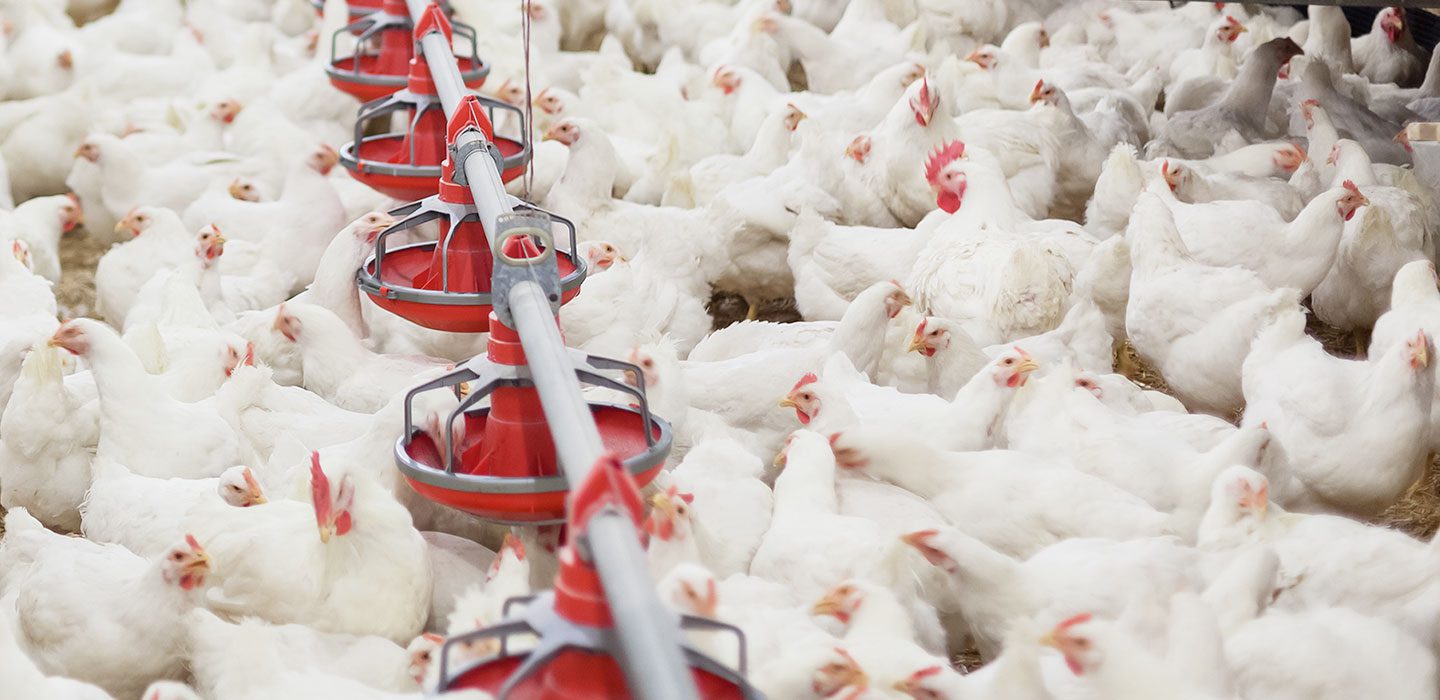
Intelligent Nutrition for Your Business
More science. More insight. More inspiration. More ways for you to feed the world.


